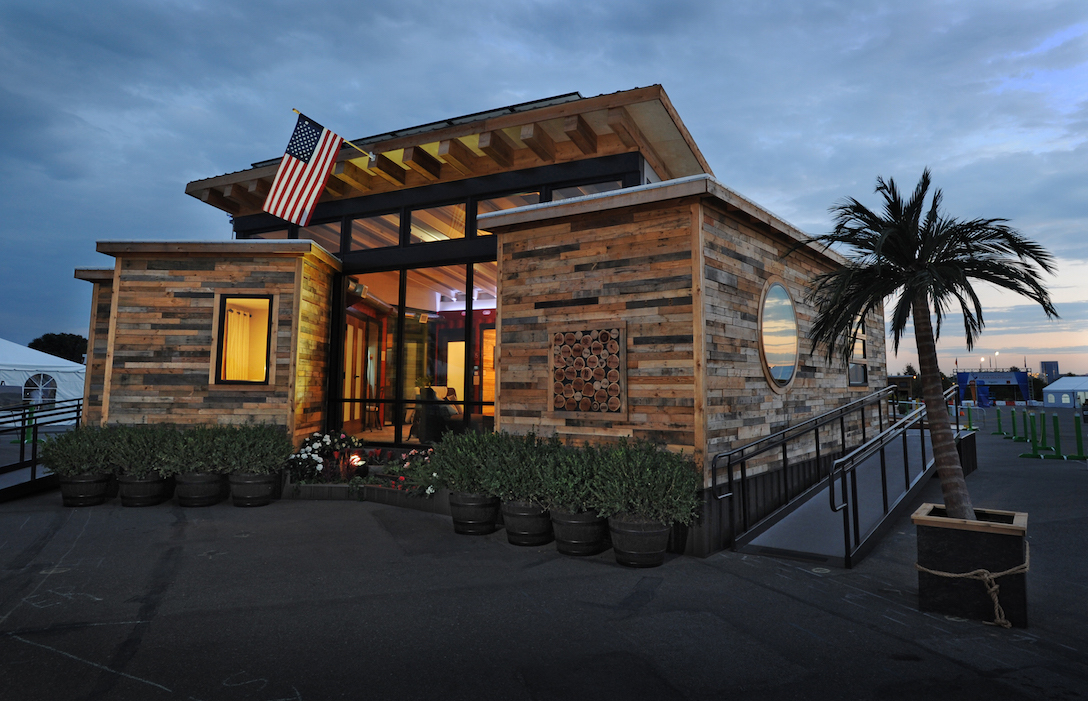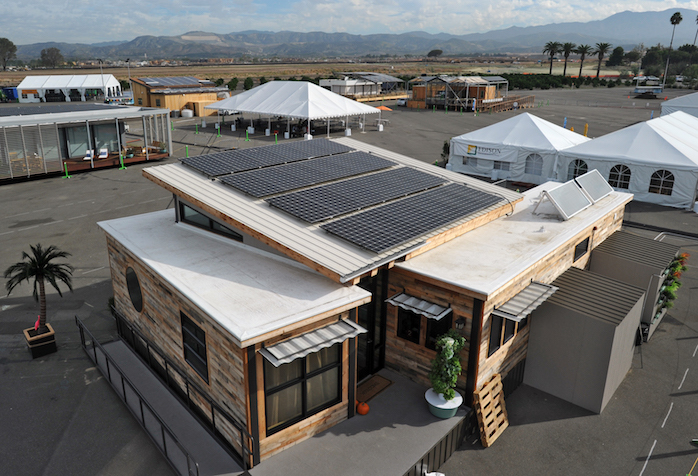
It might not look like a nest, but it uses the same theory.
Just as a bird scavenges to find exactly the right materials to build its nest, so did the Missouri University of Science and Technology create their entry for the U.S. Department of Energy 2015 Solar Decathlon. Reduce, reuse and recycle are the foundation or “Three Rs” for green living. This team took that to new heights, building not just a contest entry, but a real home that anyone would be comfortable living in.
What is the Solar Decathlon?
Every 2 – 3 years since 2002, the U.S. Department of Energy has hosted the Solar Decathlon competition. This contest “challenges collegiate teams to design, build and operate solar-powered houses that are cost-effective, energy-efficient and attractive,” says the Department of Energy. The Nest home touches on all 3 points, plus it’s unique in that it uses very little new materials.
The purpose of the Solar Decathlon is to get the word out that energy efficiency doesn’t have to be ugly, impractical or unattainable. The program seeks to educate students, demonstrate the feasibility and appeal of energy efficient design, and to help students prepare for a “clean energy workforce.” To date, 130 teams consisting of over 20,000 students have participated. Now the competition has grown into Europe, Latin America and China.

Creating a functioning net-zero solar home proves that sustainability is possible and affordable.
How the Teams Compete
Collegiate teams compete in several areas and are awarded points in three different ways. There’s task completion, monitored performance and jury evaluation. Task completion and monitored performance are quantifiable, and teams earn points based on how they meet the goals. Areas where performance can’t be measured, such as aesthetics, use field expert jury evaluation to award points.
Missouri S&T ranked 5th out of 14 teams, scoring 878.726 points overall. Their highest rankings were for commuting, home life, appliances and affordability. This team competes every two years to design and build a net-zero, solar-powered home. Once the competition is over, the home makes its way back to Missouri.

The interior is cozier than shipping containers might lead you to imagine.
How Nest Home was Built
Like a bird finds what it needs by scavenging, the team decided to use as much scrap and scavenged materials as possible. They’re found in every part of the structure. Three reused shipping containers arranged in a “deconstructed triangle” serve to defy the more common container house arrangement, according to the team’s Nest Home website. Inside, some of the original container paint was preserved, but wood from scavenged pallets make up the home’s rustic-looking siding.
Other reused and recycled materials include discarded fishing nets turned into carpeting, concrete countertop with broken glass picked up from the college campus mixed in, insulation made from old denim jeans, reused cabinets purchased at a Habitat for Humanity ReStore, and lots of DIY projects such as benches and lights.
Where the Nest Home Sits Now
After the 2015 Solar Decathlon was over, the Nest Home returned to its permanent location in Rolla, Missouri. It makes up part of the Solar Suburb at the Missouri S&T campus. The Solar Suburb provides student housing plus it’s an ongoing experiment. Student occupants living in the Nest House and other homes participate in the university’s smart-living research and development program.
The Nest is also open to anyone who is interested in the program and learning about sustainable living. According to the team, resident studies and public interaction help give direction for future design projects and help the environmentally sound housing movement grow.
The Department of Energy has a commitment to furthering energy-efficient design and making it something that the public actually wants. Engaging college students in competition is one of the best ways to do that. Not only does the DoE gain fresh insight with each new competition, students come away from the Solar Decathlon with hands-on experience which will benefit them in their future careers.
Sustainability is part of every architect’s career, and that’s truer now than ever before. That’s why many of your continuing education courses focus on it, and why PDH Academy provides the courses that you need. When your next professional development hours are due, check out our courses for architects and learn how simple continuing ed can be.
Image credits: All photos by Thomas Kelsey/U.S. Department of Energy Solar Decathlon, used with permission by the U.S. Department of Energy Solar Decathlon.






